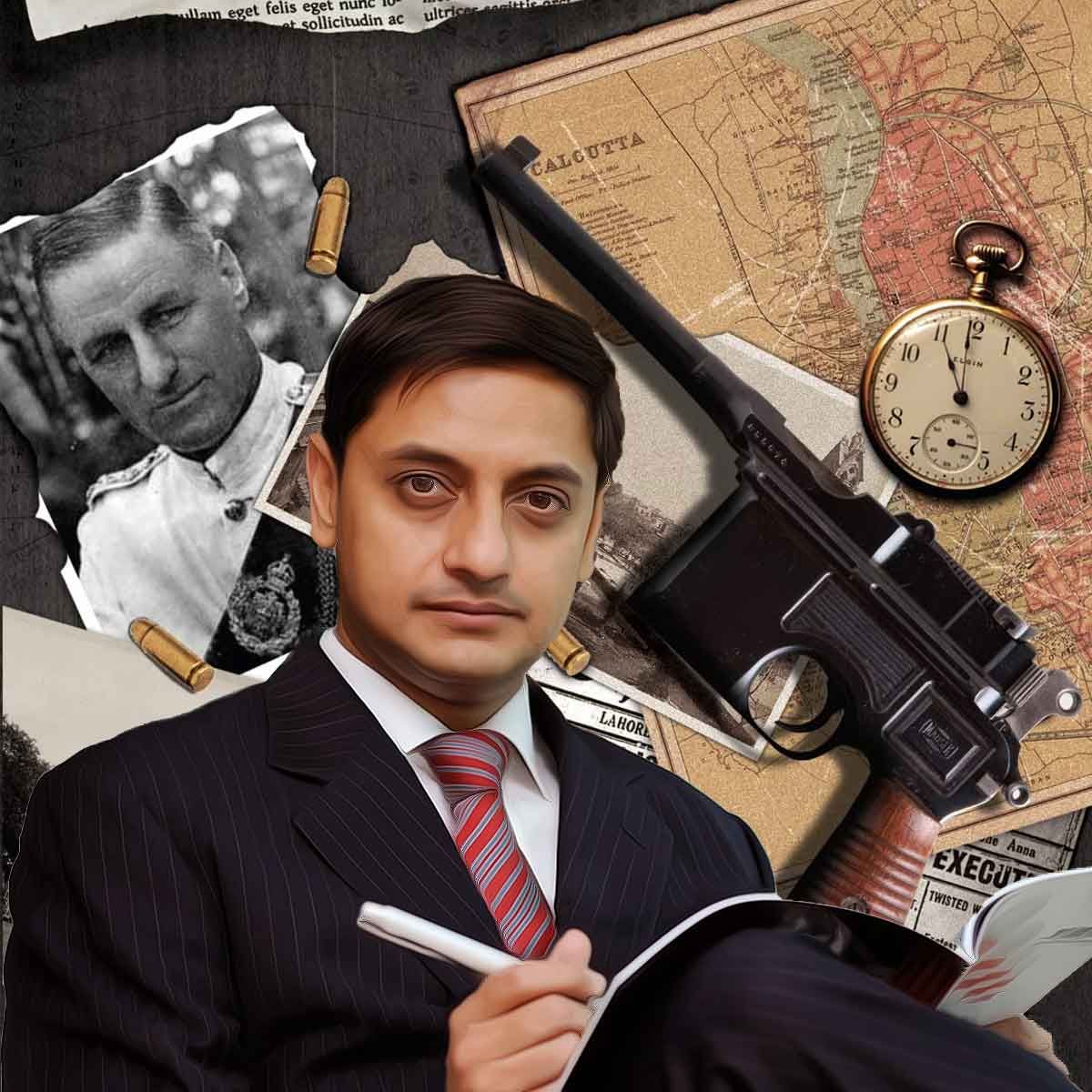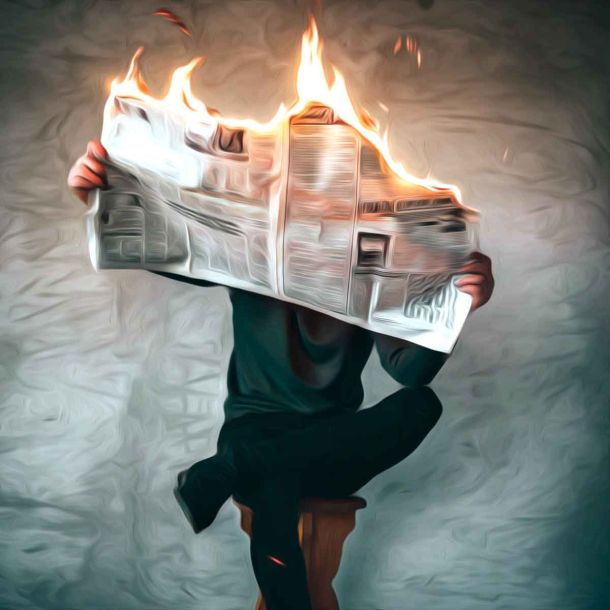More Coverage
Twitter Coverage
Satyaagrah
Written on
Satyaagrah
Written on
Satyaagrah
Written on
Satyaagrah
Written on
Satyaagrah
Written on
JOIN SATYAAGRAH SOCIAL MEDIA
"The relentless pressures of the so-called marketplace have distorted all our history and culture": 'Revolutionaries - The Other Story of How India Won Its Freedom'' by Shri Sanjeev Sanyal says History of India’s freedom struggle must be re-written

Sanjeev Sanyal, Member of the Economic Advisory Council to the Prime Minister, is not only known as an economist but also as a historian. In his latest book, ‘Revolutionaries: The Other Story of How India Won Its Freedom’, Sanyal outlines the role of the forgotten revolutionaries, who believed in armed resistance and their immense contribution to India’s freedom struggle.
|
Sanyal, through his writings, has brought out the “other narrative” of history which had often been buried. Sanyal speaks exclusively to India Narrative about the Indian freedom struggle and his latest book. An excerpt.
Q. India is seen as a seat of violence. You are building an alternative narrative which is quite the opposite. Reason?
The official narrative that India’s freedom struggle is uniquely non-violent and as if the British were politely asked to leave and they left – that is absolutely faulty. Unfortunately, that is a narrative built intentionally around India’s freedom struggle to suit a particular section of political class, intellectuals and power brokers. We have had a very organised armed struggle as well and if you look back into history, you will see the Marathas, the Sikhs, the 1857 revolt – all these were armed resistances The armed resistance was as important as the non-violent movement and it was the culmination of both that led to our independence. But systematically the role of the revolutionaries —Rashbehari Bose, Chandrashekhar Azad, even Netaji –and many others has been deliberately erased and edited.
New, alternative narratives built on truth have to come out on new platforms. And I am absolutely unapologetic about writing about this movement. My great grandfather, grand uncle was part of the freedom movement. I have no shame in portraying the truth and it is time to bring it out – create that alternative narrative based on facts.
|
The armed movement was individualistic and fragmented. Is that why it failed?
The armed movement was a big one and not at all fragmented as it has been made out to be. The revolutionaries had linkages within India as well as outside – with the German, Japanese, Irish. It involved a large number of people and let me tell you they had a wide following even within the Indian National Congress. Now if you take the example of the Jallianwala Bagh massacre, you will find that the trigger was the Rowlatt Act (which was passed in March, 1919 allowing the government to imprison anyone associated with sedition without trial).
You have also brought out the social, cultural and religious churn that took place at that time. How was this social side connected to the armed resistance?
India has had many great thinkers. We have Sri Aurobindo, Swami Vivekananda, (Rabindranath) Tagore, Dayanad Saraswati, Bal Gangadhar Tilak, VD Savarkar– you have many names. They took pride in the culture and their roots. The revolutionaries of that time had a huge connection with the thinkers of that time. They derived their identity and strength from these thinkers and reformers.
In fact, Aurobindo went on to set up the Anushilan Samiti (a society or club that focused on fitness and provided active support to the revolutionaries fighting the British). But how is it that most of the people in the country have no knowledge of this part of history?
|
Why is it so?
India has had many great thinkers. We had Aurobindo, Vivekananda, Gandhiji, Dayanand Saraswati, (Bal Gangadhar) Tilak– you have many names. They took pride in the culture and their roots. But by the 1960s, there were just two strands of leftism left, one the Marxist Left and two, the Nehruvian Left. Also, most of the senior revolutionaries did not survive till independence. Many of those who survived later died of abject poverty. And importantly, there was no space for any alternate thinking. Alternate thinking was evicted—whether it was BR Shenoy, RC Majumdar or anyone else for that matter. This was done with the state power. So finally, only one side of the narrative that suited a few was documented.
Can you specify?
Savarkar’s brother (Narayana Savarkar) was stoned to death. No proper enquiry, no investigation. There was a pogrom carried out in 1948 (primarily targeted at Maharashtrian Brahmins and according to estimates about 8000 were killed). Again, no account of it. It has been erased. Same goes with the Sikhs and Bengalis. What about the Marichjhapi killings? (Marichjhapi is an island in West Bengal’s Sundarbans, where mostly the Dalit Hindus had resettled after the Partition. The Left Front government led by late Chief Minister Jyoti Basu started with an economic blockade cutting off supplies of all essentials and then resorting to killings of thousands). Has it been written about?
Now let’s look at the 1991 Liberalisation exercise. It was not due to any sudden change in intellectual heart. The Indian economy had collapsed (India was on the brink of a sovereign default with the foreign exchange level dropping to less than $6 billion) and that was also the time when the Soviet Union disintegrated. We had no other choice but to go in for economic liberalisation. That happened but the narrative built around it is different.
What I am saying is that we must have the courage to present the whole truth.
|
Would you say that the new rising India is finally shrugging off the colonial mindset?
Look, while India was under British rule, that was not the first time that the country came under a foreign rule. India has been under some kind of foreign occupation much before the British. We have had the Mughals, we have had the Turks. So there has been resistance from time to time. For example, the Marathas rose against the Mughals.
Going back to why history has not been correctly documented is also because of the foreign powers. These foreign powers have been trying to subvert the real narrative from time to time. Even today, when you see the western think tanks’ absurd ratings for India, you see how distorted those are.
Do you think the new India is better prepared to deal with such situations?
I would hope so. At least, we are doing our best to put up a sincere effort in countering that narrative. Besides, the role of Indian collaborators cannot be undermined. Who are these collaborators? The first two generations of intellectuals (post 1947) and power brokers benefited by collaborating with the political class. This section is still going strong. Alternative narrative and thinking have been systematically killed. That must change. It is time we start speaking up.
References:
 Support Us
Support Us
Satyagraha was born from the heart of our land, with an undying aim to unveil the true essence of Bharat. It seeks to illuminate the hidden tales of our valiant freedom fighters and the rich chronicles that haven't yet sung their complete melody in the mainstream.
While platforms like NDTV and 'The Wire' effortlessly garner funds under the banner of safeguarding democracy, we at Satyagraha walk a different path. Our strength and resonance come from you. In this journey to weave a stronger Bharat, every little contribution amplifies our voice. Let's come together, contribute as you can, and champion the true spirit of our nation.
 |  |  |
| ICICI Bank of Satyaagrah | Razorpay Bank of Satyaagrah | PayPal Bank of Satyaagrah - For International Payments |
If all above doesn't work, then try the LINK below:
Please share the article on other platforms
DISCLAIMER: The author is solely responsible for the views expressed in this article. The author carries the responsibility for citing and/or licensing of images utilized within the text. The website also frequently uses non-commercial images for representational purposes only in line with the article. We are not responsible for the authenticity of such images. If some images have a copyright issue, we request the person/entity to contact us at This email address is being protected from spambots. You need JavaScript enabled to view it. and we will take the necessary actions to resolve the issue.
Related Articles
- Theft on a Grand Scale - Britain stole $45 Trillion from India and lied about it. Indian money developed Britain and Other Countries
- The Residue of Islamism - Hindu Society Under Siege
- Dangers of losing our identity: Guru Tegh Bahadur forgotten and Aurangzeb being glorified
- History, tainted by biases, conceals the valor of Hemu—a Hindu king & military genius in medieval India, orchestrating 22 victories, he reshaped history at the Battle of Panipat, his strategic brilliance defied odds, leaving indelible mark on the warfare
- Santi Ghosh and Suniti Choudhury: Two Teenage Freedom Fighters Assassinated British Magistrate
- Our first true war of independence lie forgotten within the fog of time and tomes of propaganda: Sanyasi Rebellion, when "renouncers of the material world" lead peasants in revolt against British and fundamentalist islamic clans
- Pt. Madan Mohan Malaviya’s independent ‘Note’ to the Industrial Commission of 1916: India’s Industrial Heritage
- “Everything you’ve ever wanted is on the other side of fear”: Mula Gabharu, one among phenomenal patriotic women who fought with Mughals for her husband, for motherland, called the people of Assam to fight Mughals by taking Ahom sword in their hands
- Operation Polo: When India annexed Hyderabad from the Nizam and Razakars, the suppression of Hindus and the role of Nehru
- Unsung Heroine Pritilata Waddedar, Who Shook The British Raj at the age of 21
- 21-yr-old girl Bina Das shot Bengal Governor in her convocation programme at Calcutta University, got Padma Shri but died in penury
- Add Vedas and review freedom fighter's portrayal in School textbooks: Parliamentary Committee on Education
- When Nehru ignored warnings from Sardar Patel and Sri Aurobindo and shocked USA President: Chinese Betryal and loss of centuries old ally
- Reality of Britishers who tortured, brutalized Indian women and threw them into sexual slavery
- Ram Prasad Bismil, Tribute To The Fearless Freedom Fighter And Poet




























